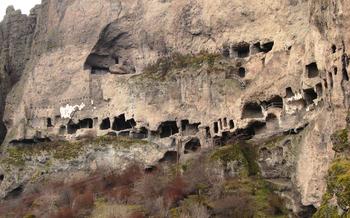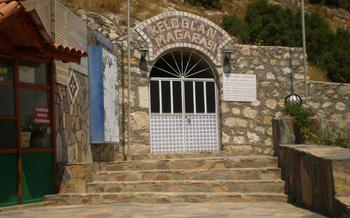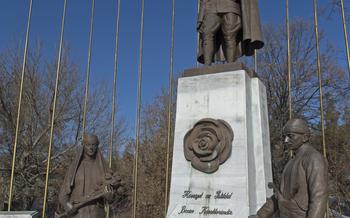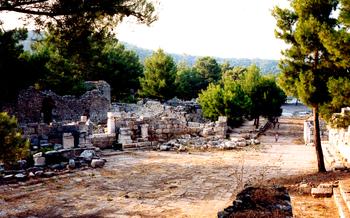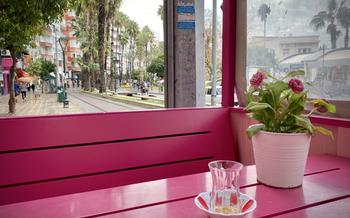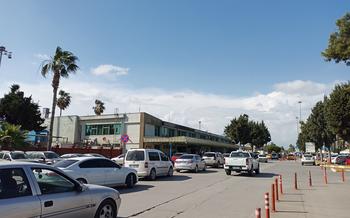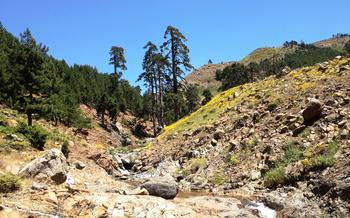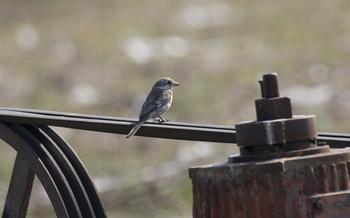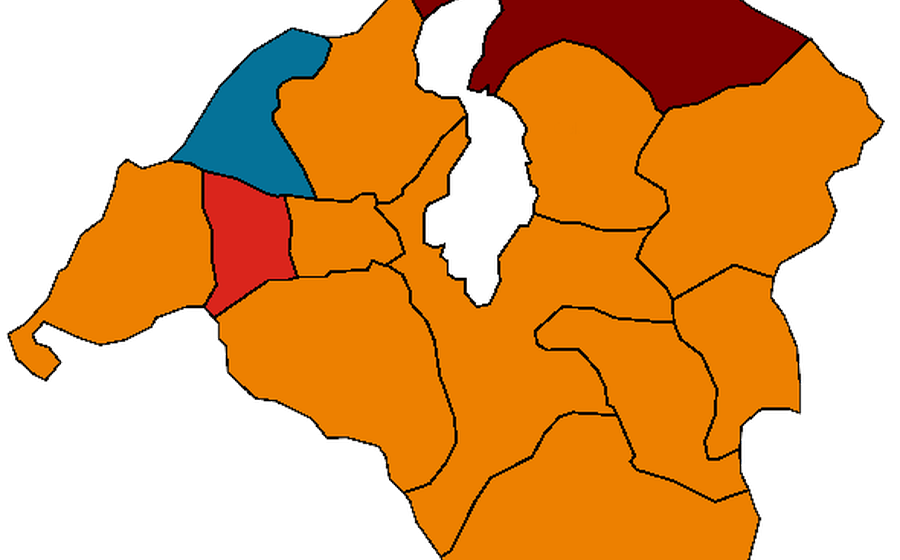
The Natural History Museum in Burdur
- The Natural History Museum in Burdur: A Journey Through Nature's Wonders
- Museum's Mission and Objectives
- Exhibits and Collections
- Paleontology
- Zoology
- Botany
- Geology: Unraveling the Earth's Story
- Educational Programs
- Research Facilities
- Guided Tours
- Accessibility and Facilities:
- Ticket Prices and Hours of Operation:
- Location and Transportation
- Nearby Attractions
- Insider Tip:
The Natural History Museum in Burdur: A Journey Through Nature's Wonders
History of the Museum
Nestled in the heart of Burdur, Turkey, the Natural History Museum stands as a testament to the region's rich natural heritage. Established in 2010, the museum has quickly become a premier destination for both locals and tourists alike, eager to explore the wonders of the natural world. Its strategic location in Burdur, renowned for its diverse ecosystems and geological formations, makes it an ideal setting for showcasing the area's unique biodiversity and geological history. The museum's establishment was a joint effort between the Burdur Municipality and the Turkish Ministry of Culture and Tourism, recognizing the significance of preserving and promoting the region's natural treasures.
Museum's Mission and Objectives
The Natural History Museum in Burdur, Turkey, is dedicated to preserving and showcasing the natural wonders of the region. Its primary goal is to foster a greater understanding and appreciation of the area's diverse flora and fauna, as well as its rich geological history. The museum serves as an educational resource for students, researchers, and the general public, providing insights into the complex interactions between living organisms and their environment.
Through its exhibits, research initiatives, and educational programs, the museum aims to promote conservation efforts and raise awareness about the importance of protecting the region's natural heritage. Collaborating with local universities and research institutions, the museum contributes to scientific research and knowledge production, expanding our understanding of the region's biodiversity and geological formations.
Exhibits and Collections
The Natural History Museum in Burdur boasts an impressive array of exhibits and collections that provide visitors with a comprehensive understanding of the region's natural history. One of the highlights is the paleontology section, which houses an extensive collection of fossils from various geological periods. Visitors can marvel at the remains of ancient creatures, including dinosaur bones, petrified shells, and fossilized plants, gaining insights into the region's prehistoric past.
The zoology section showcases the diverse animal life of the region, with exhibits featuring local and regional fauna. Visitors can observe mounted specimens of birds, mammals, reptiles, and amphibians, learning about their habitats, adaptations, and conservation status. Interactive displays allow visitors to engage with the exhibits, such as touchscreens that provide detailed information about the animals and their behavior.
The botany section highlights the rich plant life of the region, with exhibits showcasing local flora, including endemic and rare plant species. Visitors can explore the diversity of plant life, from delicate wildflowers to towering trees, and learn about the importance of preserving and understanding the region's plant diversity for ecological balance and human well-being.
Paleontology
The paleontology section of the Natural History Museum in Burdur takes visitors on a journey through millions of years of geological history. Here, they can marvel at an impressive collection of fossils that provide a glimpse into the ancient life that once inhabited the region.
One of the highlights of the paleontology section is a captivating display of dinosaur fossils. Visitors can come face-to-face with the remains of these majestic creatures, including bones, teeth, and even fossilized footprints. These exhibits shed light on the diversity and evolution of dinosaurs that roamed the earth millions of years ago.
In addition to dinosaurs, the museum also showcases fossils of other prehistoric animals, such as marine reptiles, mammals, and birds. These specimens offer valuable insights into the region's paleoecological conditions and the changes that have occurred over time.
The paleontology section not only showcases fossils but also provides interactive and educational displays that engage visitors and help them understand the significance of these ancient remains. Through hands-on exhibits and multimedia presentations, visitors can delve deeper into the world of paleontology and gain a greater appreciation for the earth's rich geological history.
Zoology
The zoology section of the Natural History Museum in Burdur offers a captivating journey into the diverse animal kingdom of Turkey and the surrounding region. Visitors can marvel at a wide array of exhibits showcasing local and regional fauna, both past and present.
Interactive displays bring to life the fascinating world of animal behavior and ecology, allowing visitors to immerse themselves in the intricacies of various habitats and ecosystems. Whether it's learning about the unique adaptations of desert-dwelling creatures, observing the intricate social dynamics of bird colonies, or exploring the underwater realms of marine life, the zoology section provides a comprehensive and engaging experience for visitors of all ages.
One of the highlights of this section is the comprehensive collection of taxidermied animals, which includes species such as the Anatolian leopard, the critically endangered Mediterranean monk seal, and a variety of bird species native to the region. These life-like displays offer a unique opportunity to observe these magnificent creatures up close and learn about their biology and conservation status.
Botany
The botany section of the Natural History Museum in Burdur offers a comprehensive exploration of the region's rich and diverse plant life. Visitors can immerse themselves in exhibits showcasing an array of local flora, including endemic and rare plant species that are unique to this part of Turkey. Through interactive displays and educational panels, the museum highlights the importance of preserving and understanding the region's plant diversity, emphasizing the vital role that plants play in ecosystems and the overall balance of the natural world.
A highlight of the botany section is the exhibit on endemic plants, which showcases a variety of species that are found exclusively in Burdur and its surrounding regions. These plants have adapted to the unique environmental conditions of the area, and their conservation is crucial for maintaining the ecological integrity of the region. Visitors can learn about the threats facing these endemic species and the efforts being made to protect them.
The museum also features a section dedicated to medicinal plants, showcasing species that have been traditionally used in Turkish folk medicine for their healing properties. Interactive displays provide information on the traditional uses of these plants, their active compounds, and their significance in various cultures. Visitors can discover the rich history of herbal remedies and the ongoing research into the potential medicinal applications of local flora.
Additionally, the botany section includes exhibits on plant anatomy, plant reproduction, and the role of plants in the food chain. Through hands-on activities and educational displays, visitors can gain a deeper understanding of the complex world of plants and their essential contributions to the environment.
Geology: Unraveling the Earth's Story
Delving into the depths of the Earth's history, the geology section of the Natural History Museum in Burdur offers a fascinating journey through the region's geological formations, rocks, and minerals. Exhibits showcase the diverse geological processes that have shaped the landscape over millions of years, providing insights into the area's unique geological heritage.
Impressive displays of fossils, rocks, and minerals tell the story of ancient seas, volcanic eruptions, and tectonic shifts that have left their mark on the region. Visitors can marvel at the beauty of crystallized minerals, learn about the formation of different rock types, and discover the significance of geological formations in understanding past climates and environments.
Interactive displays and educational exhibits make the complex world of geology accessible to visitors of all ages. Hands-on activities allow visitors to explore the properties of different rocks, create their own mini-fossils, and engage in interactive simulations that demonstrate geological processes.
Through its geology exhibits, the museum not only educates visitors about the region's geological history but also fosters an appreciation for the intricate processes that have shaped our planet. It invites visitors to embark on a journey of discovery, unraveling the mysteries of the Earth's past and gaining a deeper understanding of the forces that continue to shape our world today.
Educational Programs
The Natural History Museum in Burdur extends its mission of education and knowledge sharing beyond its exhibits and collections. The museum offers a variety of educational programs and activities designed to engage visitors of all ages and interests. These programs aim to promote a deeper understanding of natural history and foster a sense of appreciation for the environment.
School groups are encouraged to visit the museum and take advantage of guided tours tailored to their curriculum. Interactive workshops and hands-on activities bring science to life, allowing students to explore various natural history topics through experimentation and discovery.
Families can also participate in fun and educational activities designed to spark curiosity and ignite a passion for nature in children. Storytelling sessions, arts and crafts workshops, and family-friendly guided tours make learning about natural history an enjoyable and memorable experience for the whole family.
The museum also hosts regular lectures, seminars, and workshops for the general public. These events feature renowned experts and researchers who share their knowledge on a wide range of natural history topics, from the latest discoveries in paleontology to the intricate relationships between species in ecosystems.
By offering these educational programs and activities, the Natural History Museum in Burdur fulfills its role as a center for learning, fostering a greater appreciation for the natural world and inspiring future generations of scientists and conservationists.
Research Facilities
The Natural History Museum in Burdur boasts impressive research facilities that contribute significantly to scientific research and knowledge production. The museum collaborates with various universities and research institutions, fostering a vibrant environment for academic inquiry and discovery. These collaborations enable researchers from diverse fields to access the museum's extensive collections, specialized equipment, and expertise.
The museum's research facilities include dedicated laboratories equipped with state-of-the-art technology for conducting scientific analyses and experiments. Researchers have access to advanced equipment such as microscopes, DNA sequencing machines, and climate-controlled chambers for studying various aspects of natural history. The museum's library houses a comprehensive collection of scientific literature, journals, and databases, providing researchers with access to up-to-date information and research findings.
The museum's research staff includes experienced scientists, curators, and technicians who collaborate with visiting researchers and students to facilitate their research projects. These experts provide guidance, technical assistance, and access to the museum's resources, ensuring a productive and successful research experience.
The museum's research initiatives encompass a wide range of topics, including paleontology, zoology, botany, and geology. Researchers utilize the museum's collections and facilities to study the region's biodiversity, evolutionary history, and ecological processes. The museum's research findings are disseminated through publications, conferences, and educational programs, contributing to the advancement of scientific knowledge and public understanding of the natural world.
Guided Tours
Enhance your visit to the Natural History Museum in Burdur by taking advantage of the guided tours offered. These tours are led by knowledgeable museum staff or docents who will provide insightful commentary and explanations about the exhibits and collections. Gain a deeper understanding of the region's natural history, the significance of the artifacts, and the ongoing research conducted at the museum.
Guided tours are available at specific times throughout the day and can be booked in advance or upon arrival at the museum. They typically last for around an hour and cover the main highlights of the museum's exhibits. For groups or individuals with specific interests, customized tours can be arranged upon request.
Whether you are a nature enthusiast, a student, or simply curious about the wonders of the natural world, a guided tour will provide an enriching and educational experience. It is an excellent way to make the most of your visit and gain a deeper appreciation for the museum's collections and the fascinating stories they tell.
Accessibility and Facilities:
The Natural History Museum in Burdur is committed to providing an inclusive and accessible experience for all visitors. The museum is wheelchair accessible, with ramps and elevators ensuring that all exhibits and facilities are easily accessible. Visitors with disabilities can also avail themselves of wheelchairs for use within the museum.
Toilets are strategically located throughout the museum, ensuring that visitors can conveniently use the facilities as needed. A gift shop is also available, where visitors can purchase souvenirs, books, and educational materials related to the museum's exhibits and collections.
Ticket Prices and Hours of Operation:
Admission to the The Natural History Museum in Burdur is very affordable, with ticket prices set at a reasonable rate to make it accessible to visitors from all backgrounds. Students, seniors, and families can take advantage of discounted tickets, allowing them to enjoy the museum's exhibits and educational programs at a reduced cost. The museum operates on a regular schedule, with opening hours during the week and on weekends. It is recommended to check the museum's website or contact them directly for the most up-to-date information on ticket prices, discounts, and operating hours, as they may be subject to change.
Location and Transportation
The Natural History Museum in Burdur is strategically situated in the heart of the city, making it easily accessible to visitors. Its exact address is Isparta Caddesi, Burdur Merkez, conveniently located near several prominent landmarks and transportation hubs.
To reach the museum by public transportation, visitors can utilize the comprehensive bus network that operates throughout Burdur. Several bus routes have stops within walking distance of the museum, ensuring a hassle-free journey. Alternatively, taxis are readily available and offer a convenient option for those seeking direct transportation.
For those arriving by car, the museum provides ample parking space, ensuring a stress-free visit. The museum's central location also makes it an ideal starting point for exploring other attractions and landmarks in Burdur.
Nearby Attractions
After immersing yourself in the wonders of natural history at the museum, take some time to explore Burdur and its surrounding region. Just a short distance away, you'll find a wealth of other attractions that will further enrich your travel experience.
-
Salda Lake: Discover the breathtaking beauty of Salda Lake, often referred to as Turkey's Maldives. This stunning lake boasts crystal-clear turquoise waters, reminiscent of a tropical paradise. Take a refreshing dip, relax on its pristine shores, or embark on a scenic boat tour to admire the lake's natural splendor.
-
Burdur Museum: Delve deeper into the region's rich history and culture at the Burdur Museum. This museum houses an impressive collection of artifacts, including ancient pottery, sculptures, and inscriptions that shed light on the area's past civilizations.
-
Mount Davraz: For an exhilarating outdoor adventure, conquer the slopes of Mount Davraz, the highest peak in the region. Whether you prefer hiking, mountain biking, or simply taking in the panoramic views, Mount Davraz offers a thrilling experience for nature enthusiasts.
-
Ağlasun Honey Festival: If you happen to visit during the summer months, don't miss the Ağlasun Honey Festival. This vibrant festival celebrates the region's renowned honey production, showcasing a variety of local honey products and offering a glimpse into the traditional beekeeping practices of the area.
Insider Tip:
To make the most of your visit to the Natural History Museum in Burdur, plan your trip during the spring or fall months when the weather is pleasant for outdoor exploration. If you're particularly interested in paleontology, be sure to check out the museum's impressive collection of fossils, including a well-preserved dinosaur skeleton. The museum also offers guided tours that provide in-depth insights into the exhibits and the region's natural history, so consider booking a tour to enhance your experience. Finally, don't forget to visit the gift shop, where you can find a variety of souvenirs, books, and educational materials related to the museum's collections.
